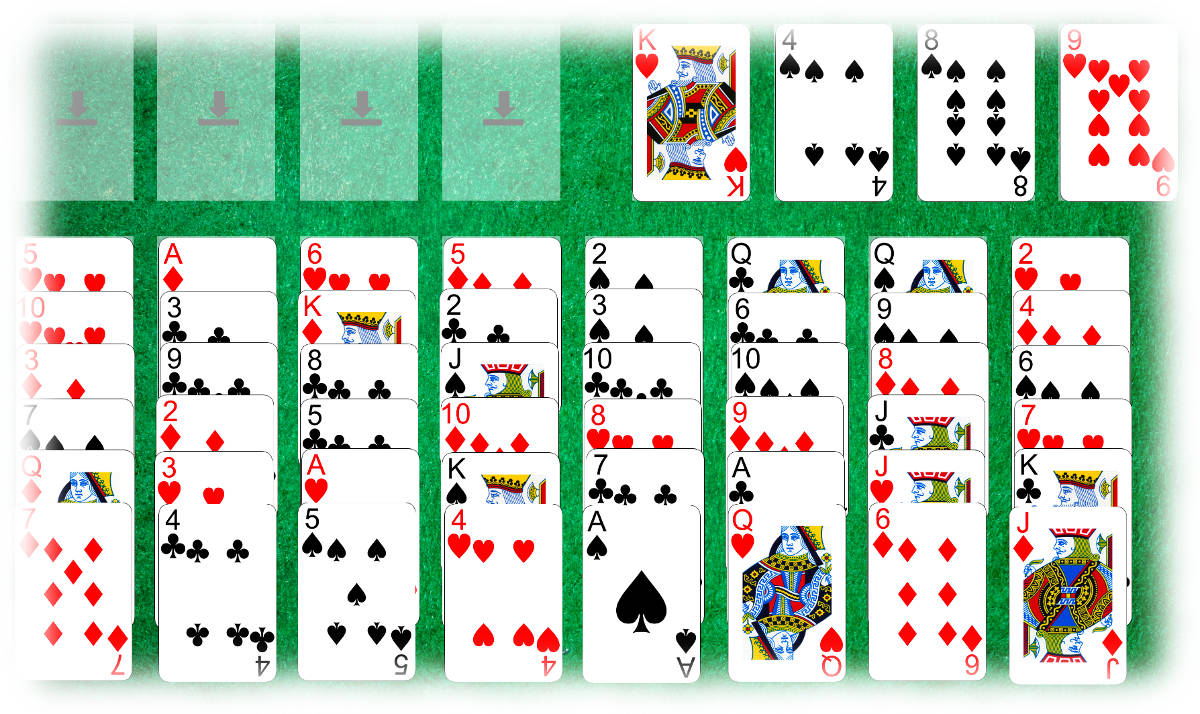How to play: Napoleon at St Helena (Napoleon pâ S:t Helena)
The game described here, Napoleon at St Helena is described in a book by Swedish author Einar Werner under the
name Napoleon pâ S:t Helena in his 1948 work Världens Bästa Patienser och Patiensspiel
("World's Best solitaire games").
It is very similar to the game that Martin Gardener describes as
Baker's Game in his 1968 Scientific American article, but also has a couple of crucial differences
that we will see below.
Note that other solitaire games also exist with similar titles.
Layout
Napoleon at St Helena is played with the entire deck dealt face up at the start of the game. The cards are dealt
as follows:
- 48 of the cards are dealt into 8 columns of six cards each;
- the remaining four cards form "store" piles or reserves.
The layout also includes four foundation piles, which are initially empty.
The "store" piles (referred to as "depân" in Swedish author's Einar Werner's description of the game) are the equivalents to
the cells in Free Cell or Baker's Game: they are effectively "slots" that hold one card each and are used by the player to
organise the cards. But crucially, in Napoleon at St Helena, these store piles are filled at the start of the game. Before other
cards can be placed in them, the initial cards must be played on to the tableau or foundations.

Napoleon in St Helena (Napoleon pâ S:t Helena) layout in Solitaire Whizz for iPad
Aim
The aim, as with FreeCell, is to build all cards on to the foundation piles, one pile per suit. As the Aces become available, build them on to the foundations, followed by the corresponding 2s etc.
Gameplay
The bottom card of any foundation column is available for play at any time. An available card may be played on to a foundation (ascending order, one foundation per suit), on to a store pile, or
on to another column. As in FreeCell, to build on to another column, you must do so in downward sequence, alternating
red/black.
Cards in the "store" piles are always available for play, either on to a foundation or on to the bottom of
a column in the tableau.
Empty columns may be filled with a king. This therefore differs from Free Cell, where columns can be filled with any card.